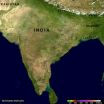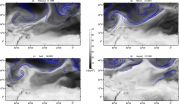How a gut feeling for infection programs our immune response
2015-06-09
(Press-News.org) An unexpected finding by an international team of scientists based at The University of Manchester and National Institutes of Health in America has shed new light on how immune cells are programmed to either repair or protect the body.
It's hoped the discovery will inform the development of better treatments for a range of conditions from inflammatory bowel diseases (IBD) to certain cancers.
The research, led by Dr John Grainger from the Manchester Collaborative Centre for Inflammation Research (MCCIR) and Dr Yasmine Belkaid from the National Institute of Allergy and Infectious Diseases (NIAID) in the USA will be published in the journal Immunity.
Their work focuses on understanding the role of specialised immune cells, known as monocytes, which are constantly being made in the bone marrow and circulated in the blood stream. These cells are rapidly called to sites of infection and injury and have an amazing ability to change what they do to suit the situation in which they find themselves. This either involves them protecting the body from an attacking infection or acting as a repair agent to aid wound healing.
However, when these cells choose the wrong function this can result in severe inflammation leading to conditions such as inflammatory bowel diseases and even cancer.
What scientists haven't been able to do is identify how the cells decide which function to fulfil. It has always been assumed that the programming takes place once the cells arrive at the point of injury or infection but this has not been well investigated.
Using mouse models Dr Grainger and his team looked at how and where monocytes are programmed in response to toxoplasmosis, an infection caused by a common parasite called Toxoplasma gondii. The parasite infects the gut and is most commonly found in undercooked meat. Pregnant women are also advised to avoid cat faeces due to the risk of infection.
Dr Grainger, a Wellcome Trust and Royal Society Fellow, explains what they found: "Our work shows that very soon after the toxoplasma invades the gut the tissue starts to communicate with other parts of the body to alter the immune system. One particular cell-type in the gut, the dendritic cell, can act as a beacon sending out long-range signals to the bone marrow where monocytes are produced. Cells in the bone marrow then pick up the signal and pre-programme monocytes with the appropriate function to either protect or repair.
"So even before they get to the damaged tissue the monocytes already know what to do. This turns on its head the idea that monocytes are programmed when they get to the infected gut and puts the early signals coming out from the gut at the centre of monocyte programming. Your initial gut feeling about the infection is literally telling the rest of the system what to do."
He continues: "We were really surprised by this finding as it went against what we had predicted. Therapeutically this changes how we want to try to re-programme these cells. At the moment a lot of therapies are focused on the site of infection or injury itself but this data suggests that it's the signals that are being sent out from the gut that are impacting the whole immune system. It might even be possible to develop drugs to target the programming mechanisms within the bone marrow, although at the moment we don't know enough about the bone marrow to do this, which is why our research is so important."
Dr Belkaid adds: "Understanding more about how the bone marrow programmes monocytes is important not only for treating conditions but also preventing them. When monocytes provide the wrong response, this could lead to severe outcomes ranging from inflammatory disorders to tumour development."
On top of uncovering the long-range signaling mechanisms the researchers were astounded by another aspect of the programming which revealed that signals can not only programme the monocytes to protect against the infection, but also to change to a repair function when they come across the good (commensal) bacteria in the gut.
Dr Grainger says: "We were really blown away by the fact that the monocytes could change their function depending on the commensal bacteria in the gut. We're all becoming increasingly aware of how different types of commensal bacteria can affect our health - what we need to do now is test whether specific species within the whole commensal group are responsible for influencing monocyte function in a particular way."
Dr Grainger and his team are now working with other groups at The University of Manchester to carry out further studies on monocytes, particularly from patients with inflammatory conditions, and are focused on identifying situations where this gut information system may have gone wrong such as in inflammatory bowel diseases.
INFORMATION:
ELSE PRESS RELEASES FROM THIS DATE:
2015-06-09
Large magnetic storms from the Sun, which affect technologies such as GPS and utility grids, could soon be predicted more than 24 hours in advance.
Coronal mass ejections (CMEs) are eruptions of gas and magnetised material from the Sun that have the potential to wreak havoc on satellites and Earth-bound technologies, disrupting radio transmissions and causing transformer blowouts and blackouts.
These mass ejections can cause problems with GPS technology - used by all kinds of vehicles, from cars to oil tankers to tractors. For example, they can affect the ability of ...
2015-06-09
What:
The Makona strain of Ebola virus (EBOV) circulating in West Africa for the past year takes roughly two days longer to cause terminal disease in an animal model compared to the original 1976 Mayinga strain isolated in Central Africa, according to a new National Institutes of Health (NIH) report. The results provide important information to scientists who have wondered if the Ebola virus in West Africa is becoming more severe. In fact, the new study suggests the current virus has a decreased ability to cause disease in their animal model compared to the 1976 strain.
Using ...
2015-06-09
This news release is available in Spanish.
CRG scientists describe a new mechanism shaping cells and generating cell contractile forces during development and organogenesis.
The new mechanism, which has been published today in the journal Developmental Cell, includes strategies shared with programmed cell death but which have not previously been directly associated with force generation.
Studying developmental processes such as the one presented in the Dev. Cell paper contributes to a better understanding of organ development and maintenance. Also, ...
2015-06-09
Simple steps that include the consistent use of experienced medical teams for a single type of surgery, preemptive antibiotics before the procedure, less reliance on potent opioids during recovery and urging patients to get out of bed and move around sooner can not only prevent infections, blood clots and other serious complications in people undergoing colorectal operations, but can also accelerate recovery and reduce cost of care, according to results of an ongoing program at The Johns Hopkins Hospital.
The approach, dubbed Integrated Recovery Pathway, or IRP, and its ...
2015-06-09
In a small clinical trial, scientists at Johns Hopkins' Kimmel Cancer Center and James Buchanan Brady Urological Institute found that men with advanced prostate cancer and detection of androgen receptor splice variant-7 (AR-V7) respond to chemotherapy just as well as men who lack the variant.
The findings, the researchers say, may be significant for patients who carry the AR-V7 variant, because they are more likely to develop resistance to one of two hormone drugs routinely used to treat their disease. Results of the trial are published online in the June 4 issue of JAMA ...
2015-06-09
Young adults who use social media to quit smoking are twice as successful in their efforts as those who use a more traditional method, according to new research from the University of Waterloo.
The study, published last week in Nicotine & Tobacco Research, compared the success of the social media-based campaign Break It Off with Smokers' Helpline, a telephone hotline for young adults looking to quit smoking.
After three months in the program, 32 per cent of smokers who used Break It Off apps and web tools had quit smoking, compared to 14 per cent of their peers who ...
2015-06-09
Monsoon rainfall, although a little later than normal, started on June 5, 2015, in southern India. The Global Precipitation Measurement (GPM) core satellite gathered rainfall data that was used to create an animation that shows where the precipitation fell as the season started.
Due to El Nino conditions some meteorologists predict that monsoon rainfall will be below normal this year. Cooling rainfall comes to the country after high temperatures preceding the monsoon have caused the reported deaths of more than 2,300 people.
Data from the NASA's Integrated Multi-satellitE ...
2015-06-09
The remnants of former Hurricane Blanca are blanking out over the northern part of Mexico's Baja California today, June 9. NOAA's GOES-West satellite captured an infrared image of Blanca's remnants revealing a disorganized storm. All watches and warnings have been dropped.
NOAA's GOES-West satellite took an image of Blanca's remnants as it continued moving over the northern Baja California peninsula on June 9 at 1245 UTC (8:45 a.m. EDT). The clouds associated with the remnants were over the northern Baja and over the northern portion of mainland Mexico. The western-most ...
2015-06-09
WASHINGTON, DC, June 9, 2015 - If you want to assign blame on an overcast day, then cast your eyes on the tropics. Water vapor originating from the Earth's tropics is transported to midlatitudes on long filaments of flowing air that intermittently travel across the world's oceans. When these airy tendrils make landfall, they can cause severe floods and other extreme weather events. Yet despite the importance of these "atmospheric rivers" for the global water and heat cycles, the mechanism behind their formation is still a mystery.
But a new study, published this week ...
2015-06-09
Between 1993 and 2012, the incidence rate of acute traumatic spinal cord injury remained relatively stable in the U.S., although there was an increase among older adults, mostly associated with an increase in falls, according to a study in the June 9 issue of JAMA, a theme issue on the Americans with Disabilities Act.
Traumatic spinal cord injury leads to chronic impairment and disability. Despite the substantial effects of this injury on health-related quality of life and health care spending, contemporary data on trends in incidence, causes, and medical care are limited, ...
LAST 30 PRESS RELEASES:
[Press-News.org] How a gut feeling for infection programs our immune response




